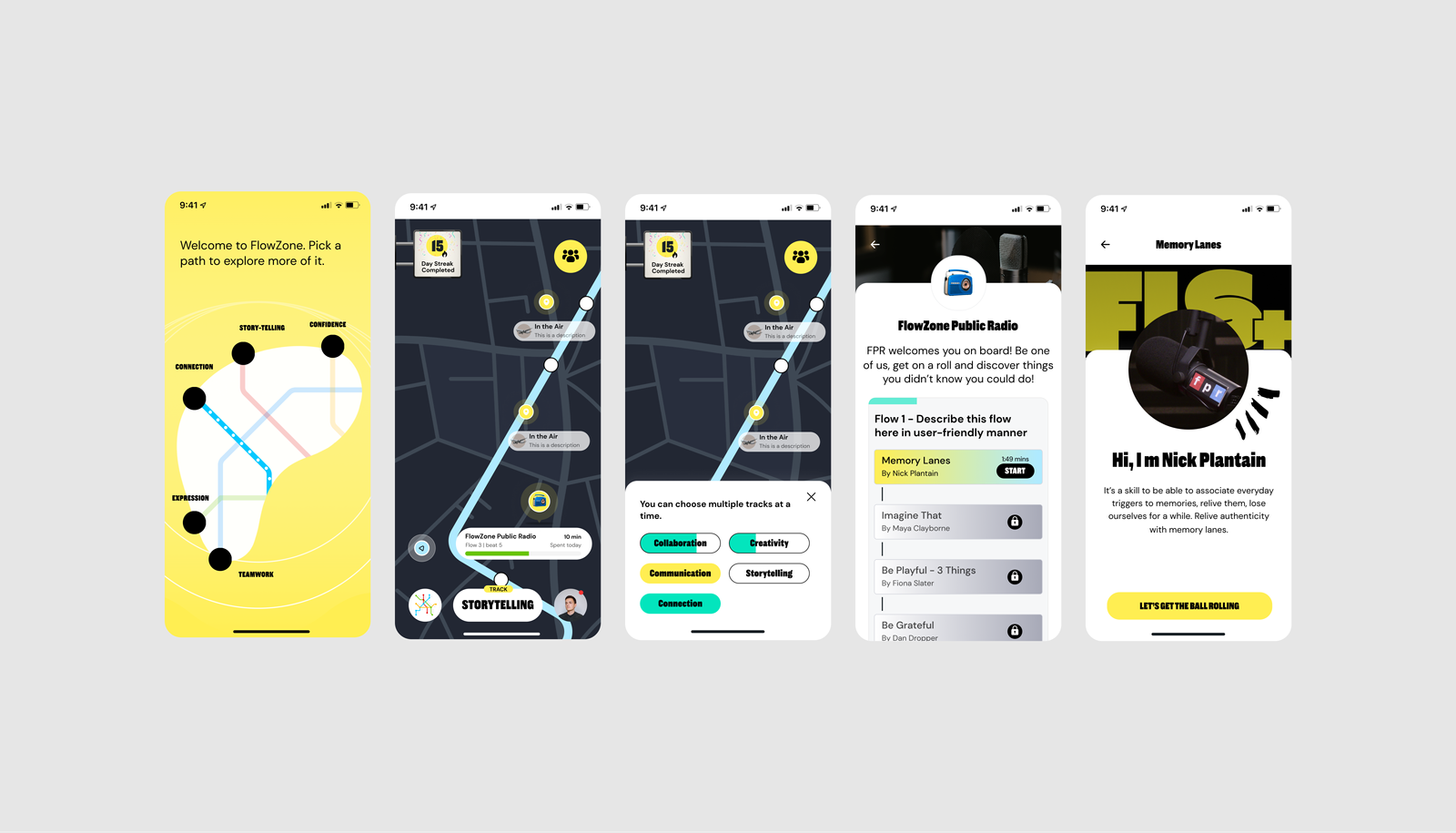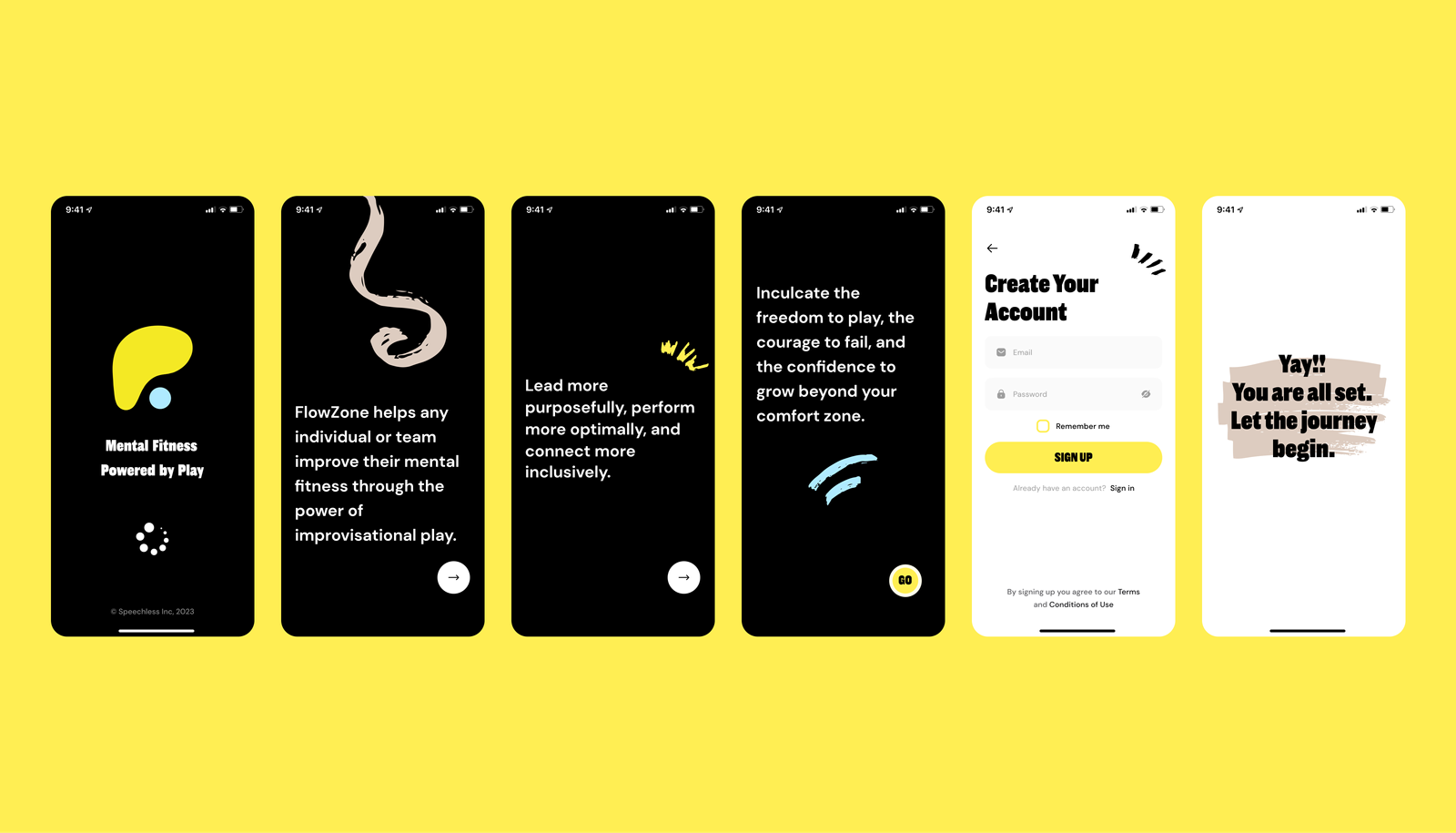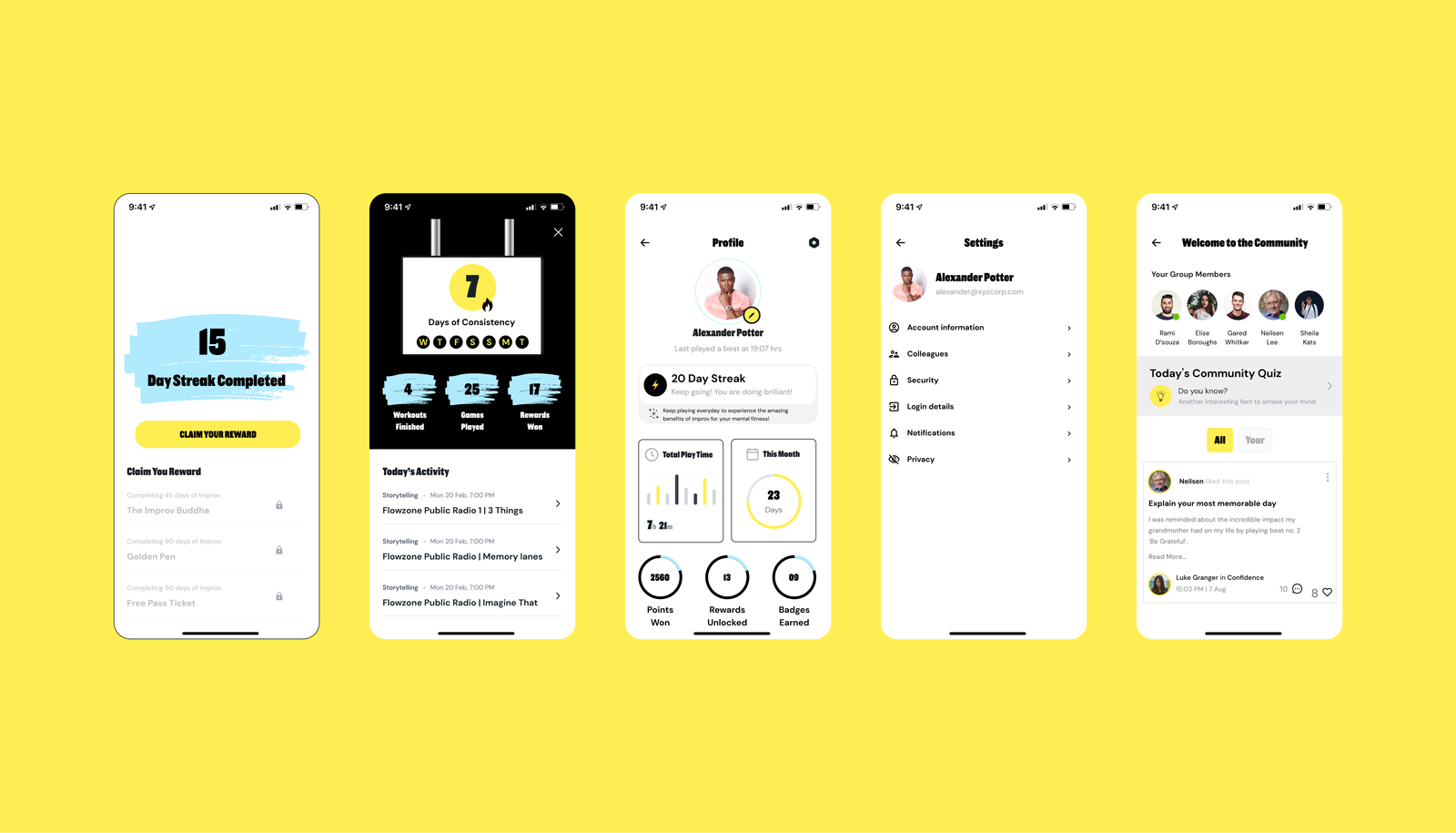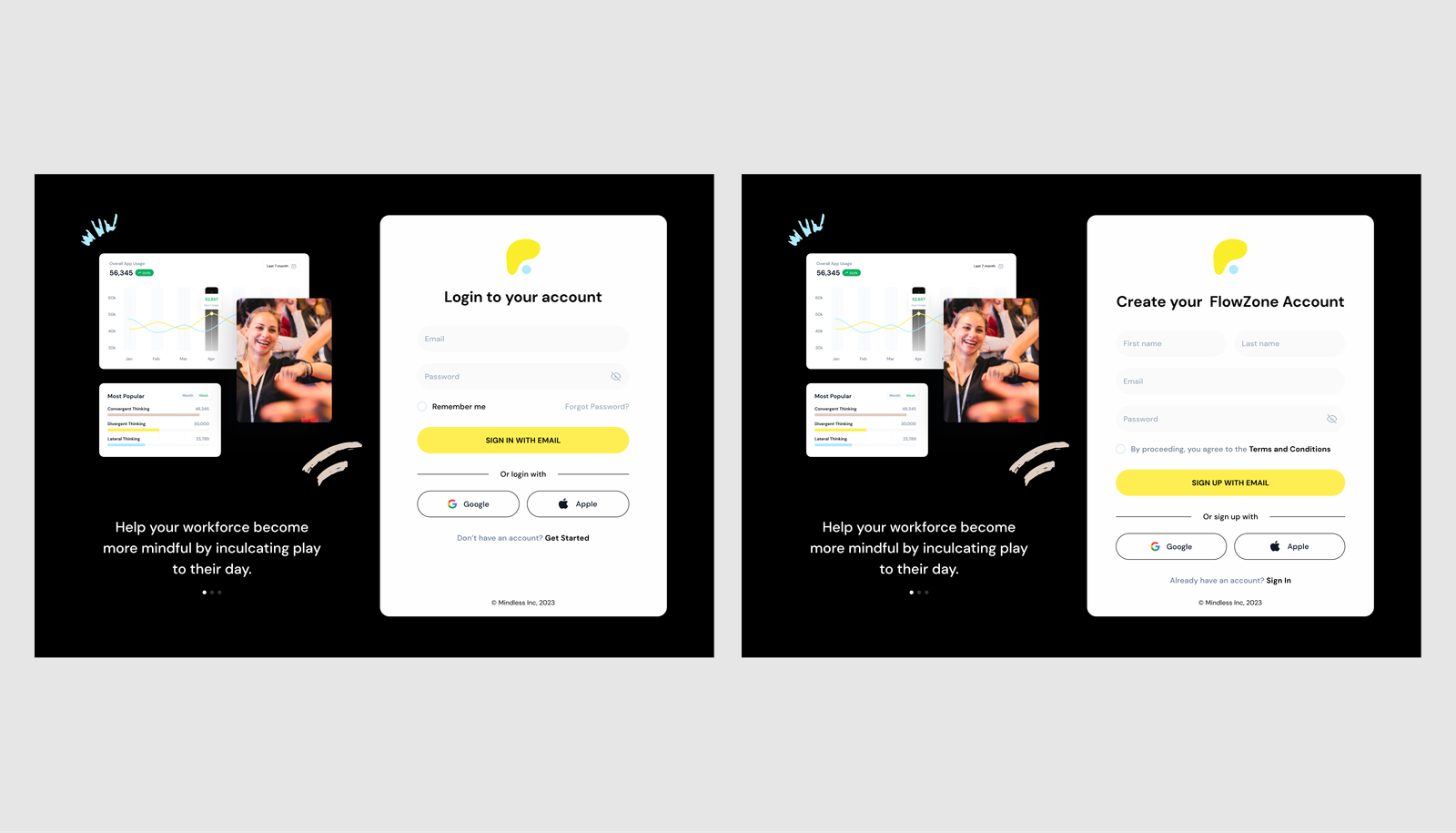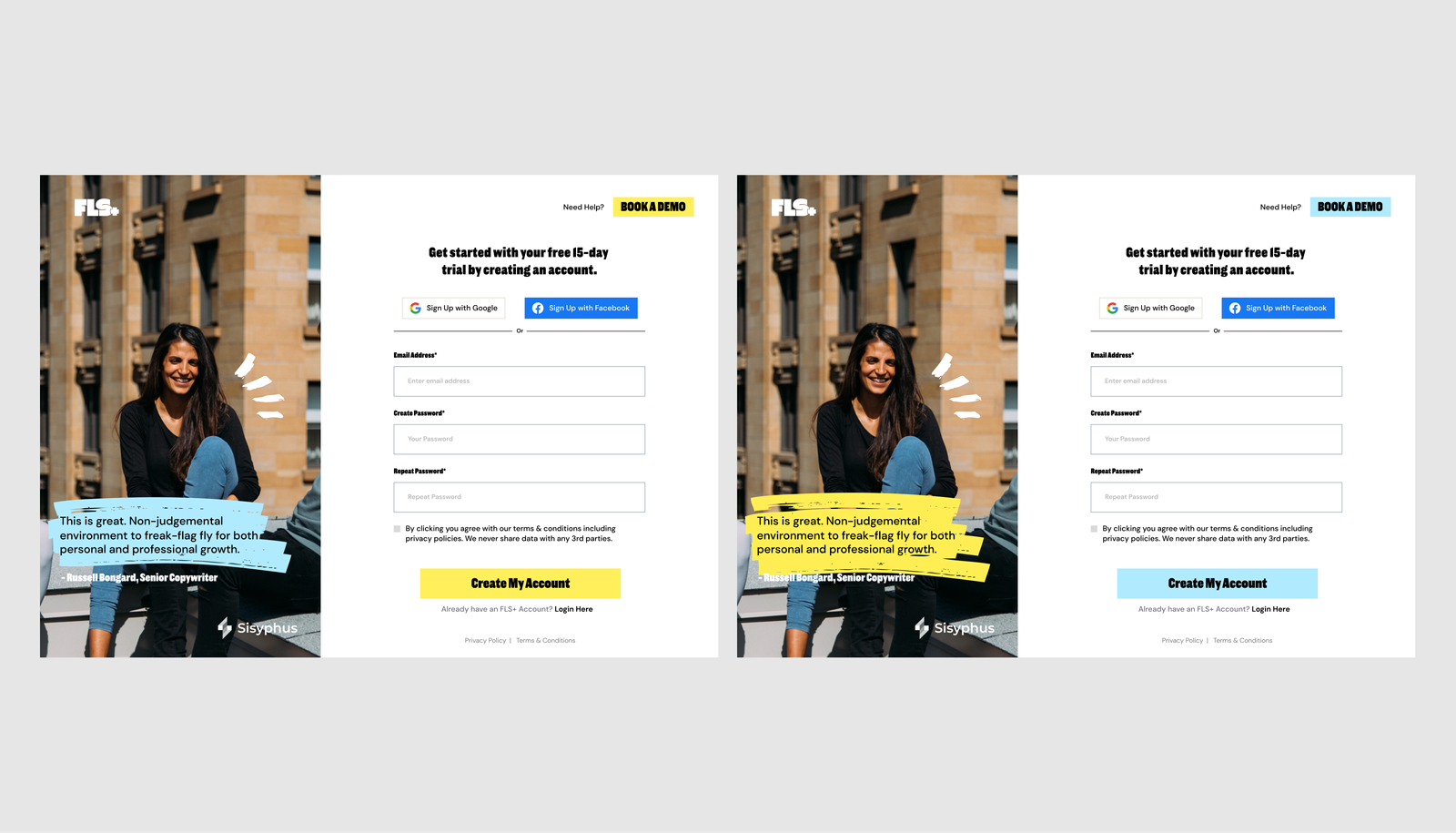Flowzone App
Freestyle+ helps teams connect through the science of improvisation and musicality.
Task
FlowZone 0-to-1 Mobile App: Boosting Authenticity and Confidence through Improvisation" FlowZone, targeted at users from renowned companies like Adobe, Pfizer, Google etc. The game app, where the user was required to input data in form of text, recorded voice and selecting graphics. It was relatively less data heavy, but I include this example because the app required data input to be very seamless. Also, it was a mobile app & input of text was a challenge, considering the restricted screen real estate. I addressed that by enabling expansion and pop out of text area and by offering users the option to toggle between text and voice. Also, one could totally skip to the next game, based on the environmental limitations they were facing at that point in time.
